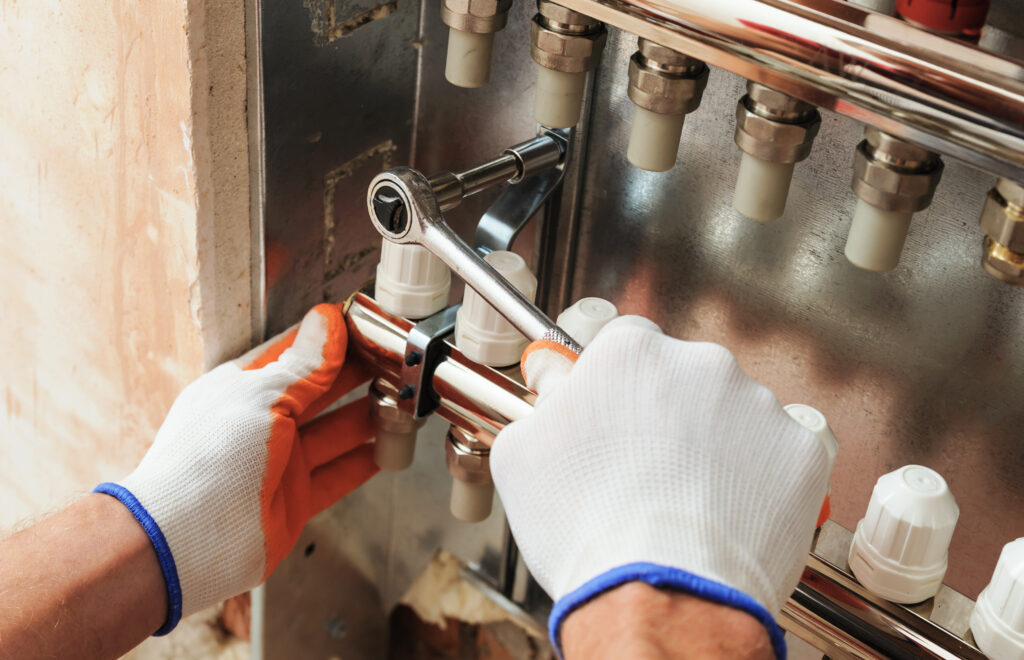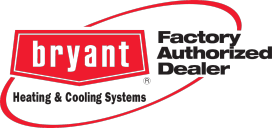
I once lived with a roommate who had this perspective on household systems:
“I don’t care how things work; I just need them to turn on.”
It’s a bottom-line view, and there’s nothing necessarily wrong with it. After all, not every homeowner can (or should) be an electrician and a plumber and an HVAC expert.
But here’s my perspective: It’s easier to have confidence in things turning on when you have a fundamental understanding of how they work.
To that end, let’s take a look at the basic functionality behind the three most common heating systems for homes in Maryland: hydronic heating, forced-air furnaces, and heat pumps. If you think it might be helpful for you to have a baseline understanding of how your heating systems work (or if you’re just curious) this article is for you.
1. How hydronic heat works
As signified by word “hydronic,” this mode of heat works by circulating heated water throughout a space.
Hydronic heating systems are driven by a boiler, which commonly uses electricity or natural gas to heat water to a controlled temperature. From there, water is transported around the house through piping. It’s usually delivered to radiators, where heat is dispersed into a room before the water is carried back to the boiler for reheating.
It’s a simple and efficient heating system, and it carries two main benefits. First, it tends to result in heat that’s more even; instead of having heated air “blow over you,” you’ll experience warmth that sits in the room and surrounds you, uninterrupted by air flow. Second, it doesn’t dry out the air, because it doesn’t involve any air flow between the inside and outside of the house.
These two factors can make hydronic heating feel more comfortable. However, there are also two drawbacks to hydronic heat. One is aesthetic – some people simply prefer not to have radiators in their rooms. The second is the danger of water damage. Leakage from the pipes of a forced-air system just leads to inefficiency, but leakage from hydronics system components can quickly cause a major mess.
2. How forced-air gas furnaces work
Forced-air furnaces are some of the most common heating systems in Maryland. They’re a bit more complicated and less efficient than hydronic systems, but they’re popular because they effectively heat homes even at low temperatures and they don’t require radiators (just ducts and vents).
These systems use combustion and natural gas to heat burners, which are safeguarded by switches to cut them off if they get too hot.
From there, an inducer motor pulls heat through a heat exchanger, where cool air is passed through and warmed before being distributed by a fan throughout the space. When the air around your thermostat reaches your set temperature, the burners will turn off, though the fans will run a little while longer to cool things down.
It’s worth noting that these systems have become more effective over the past few decades as heat exchangers have been made more serpentine. With more passes back and forth in a small area, air can collect more heat before being circulated.
The drawback for these systems is that they don’t result in “comfortable” heat in the same way that hydronic systems do, because they involve more airflow and drier air. The good news is that this can be balanced with built-in humidifiers.
3. How heat pumps work.
Heat pumps are the third and final type of heating system we’ll cover. These systems were originally built for use in the south in warmer climates, but they’ve increasingly made their way north as the technology has developed.
Heat pumps use the same mechanism that air conditioning does – just in reverse. They pump hot gas into an evaporator coil, then blow cold air across the coil to get warm air. Importantly, they aren’t generating heat; they’re simply absorbing heat from outside air and transferring it to the inside air.
As you might expect, transferring heat from outside to inside becomes more difficult in colder temperatures. Somewhat counterintuitively, this isn’t because there isn’t enough heat outside – instead, it’s because the cold causes coil pressure to decrease, which makes the transference of heat less effective. This can lead to coils freezing.
To prevent this, heat pumps will reverse into AC mode, allowing hot gas back through the coil to melt frozen condensation. This often results in steam rising from outdoor units, which homeowners can mistake for smoke. Don’t worry – if you have a heat pump and you see this, your system is working the way it should be.
Heat pumps have been adapted to colder climates with the addition of auxiliary heating systems. These are electric heaters that kick on when temperatures get below a certain threshold.
The drawback of these systems is that you’ll see your energy bill spike during cold spells when you’re forced to rely on auxiliary heat.
Need help with your heating system?
Hopefully, having a better understanding of how your heating system works will prepare you to use it well this winter.
As you prepare you systems for the coming cold season, the best thing to do is schedule a maintenance checkup. Our technicians are experts in HVAC; they’ll review your systems’ key components and test them to make sure everything is prepared for the cold months ahead. They’ll also be able to diagnose and remedy any issues.
Or, to put it in bottom-line language: We can make sure your heat turns on when you need it to.


